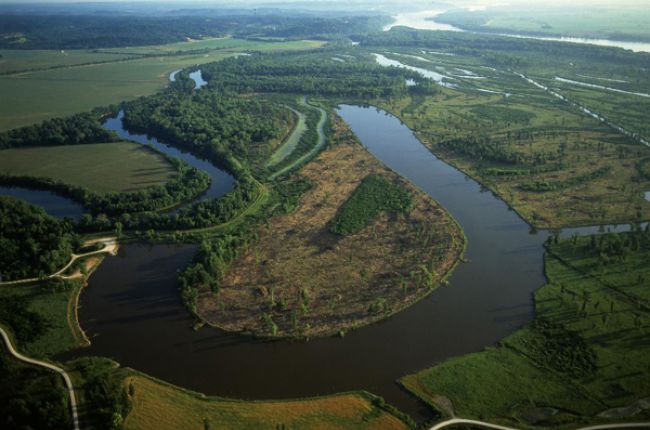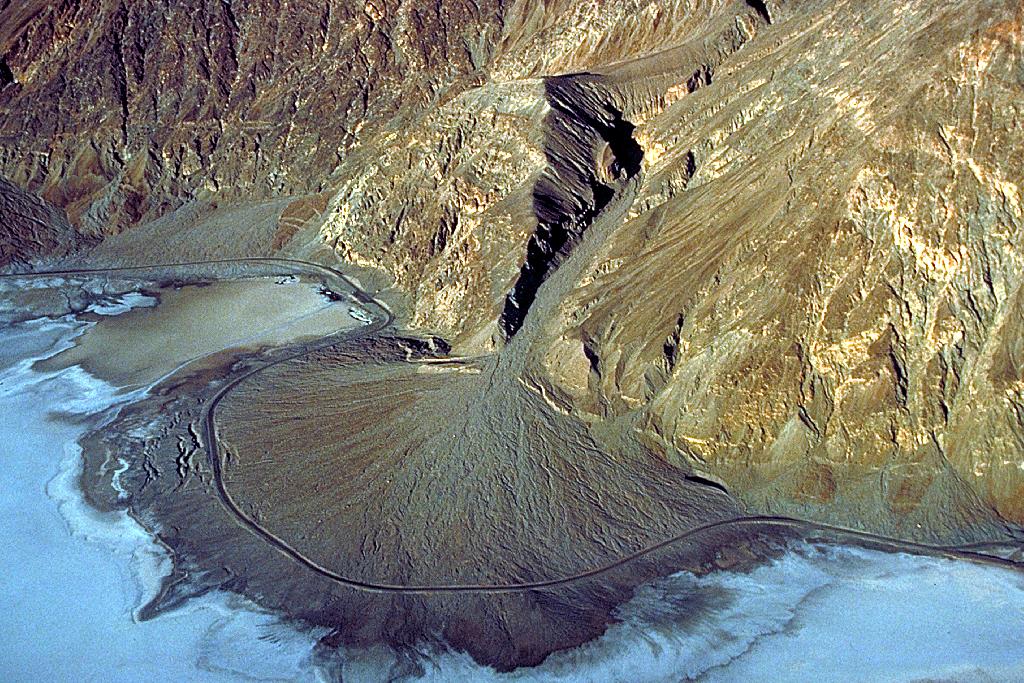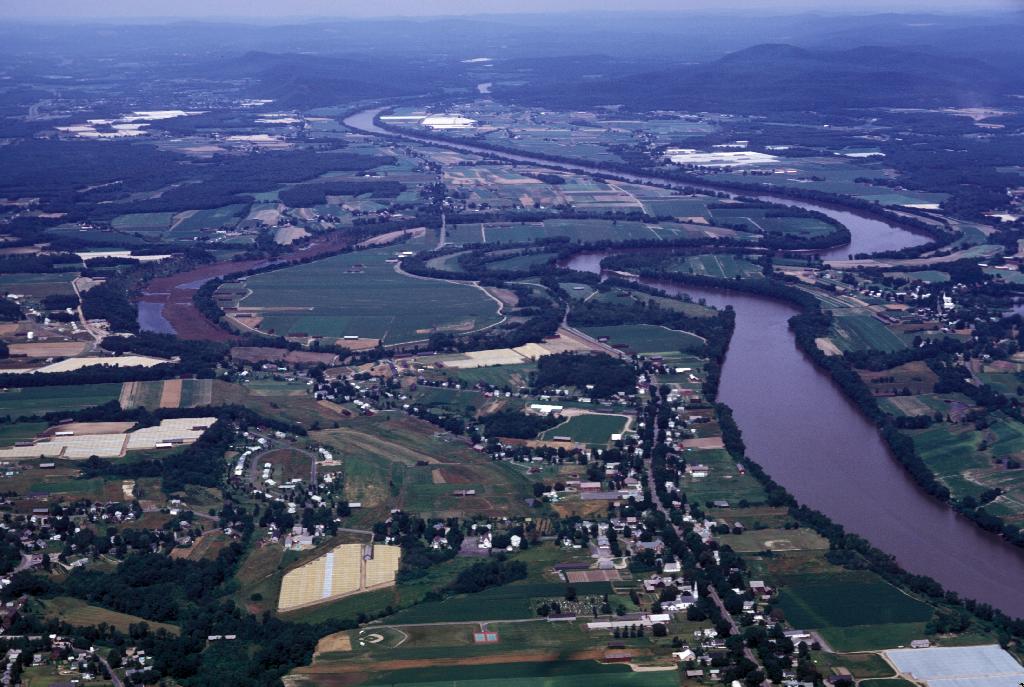
Streams erode and transport sediment. As the loose sediments are moved along the bottom of the river channel, small bedforms (formations of sediment on the bottom of the stream bed) can develop, such as ripples and sand dunes. The total load (quantity of sediment) of a stream can be described as consisting of three components:
- the bed load - materials bounced along the stream bottom
- the suspended load - material carried in suspension in the stream water
- the dissolved load - material carried as dissolved solids in the stream water
The maximum size of particle that is stream is capable of transporting is termed its competence, and is strongly related to velocity. The capacity of a stream is a measure of the total load that a stream can carry, and is controlled by the discharge.

© Marli Miller, University of Oregon
Alluvium
All material moved and deposited by streams is termed alluvium. Alluvial rivers are those streams whose bed and banks consist of alluvium, and can be divided into three main types: braided, meandering and straight channels.
Deltas
Deltas are depositional landforms that consist largely of alluvium, where a river enters a standing body of water and deposits its load. Alluvial fans are similar, but are deposited by streams in areas where there are abrupt changes in channel gradient. These landforms are best observed in arid settings at the base of a mountain range.

© Bruce Molnia, Terra Photographics
Floodplain
The floodplain of a stream is the low-lying land adjacent to the channel that periodically is flooded. The position of an alluvial stream channel can, through time, move across the floodplain as the channel erodes and re-deposits the sediment.
Drainage basin
A drainage basin is the area of land that drains to a given stream, and is bound by a high topographic ridge called a drainage divide. The drainage pattern is the arrangement of streams within a drainage basin. For example, the most common drainage pattern is termed dendritic, because streams tend to branch into smaller and smaller tributaries in an upstream direction.
Rivers and streams
Rivers or streams behave as systems. If you disturb one part of the stream channel, it will cause changes in an upstream and downstream direction. Constructing a dam will cause deposition in the reservoir behind the dam and erosion downstream. Constructing levies will reduce the amount of sediment delivered to floodplains and increase the amount of sediment carried and deposited downstream.





